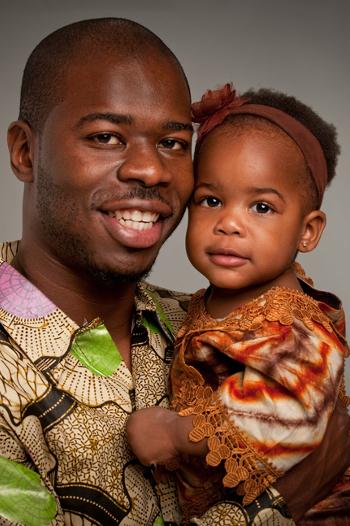What colour eyes do you have?
Duration/age

Everyone is different and unique. How we look and dress, what we like, the things we are good at and are interested in differs for everyone.
Sometimes members of the same family can look similar. Do you all have the same hair and eye colour or is each person a little different?
The boys in our family all have blue eyes but the girls have a mixture of green and brown.
Who has the same colour eyes in your family? Does your extended family have similar colours or are they different? Have you ever noticed what colour eyes people have in other families?
Next time you are out and about, see how many different eye colours you notice. Is there more of one colour than another? How many different shades of the same colour can you see?
Materials you will need
- Your eyes
- Everyone's eyes
Skills this activity improves
Why does this matter?
Children have a natural sense of wonder about the world around them. Talking about the things you notice helps your child to make sense of what they observe and develop their observation skills and language to describe what they see.
As they begin to notice and compare what is the same or different around them they are developing descriptive language and experimenting with how to ask questions to get more information.
When they compare what is the same or different they will be using mathematical language to describe what they see and to help them learn new things.
What does this lead to?
Some children are naturally curious and creative, taking risks in their learning. Children who are naturally curious and creative often notice and wonder about what they see around them. They will ask questions and create their own answers. These children have a disposition to be creative and curious.
When children notice the differences around them, they are able to sort and group them by attributes.
Sorting things into smaller groups helps children to make decisions about how to interact with the objects. The grouping of the objects creates information and data. The information helps to tell us what to do and how to act.
“In our family there are more brown eyes than blue. There are 5 people - 4 have brown eyes but only 1 person has blue eyes.”
Language to use
- Eye
- Colour, shade
- Blue, green, brown, hazel
- Light, dark
- Speckled
- Similar, same, different
Questions to use
- Do all people have the same colour eyes?
- Can one eye be a different colour to the other eye?
- What colour eyes do most people have?
- Are all blue eyes the same shade?
- Do eyes change colour?
Useful tips
- You might also like to take a look at the activities We went walking, Travelling with children and Pattern walk.
- Remember to talk to your child in your home language.
More ideas
Make a storybook about your family’s features.
Variation by age
Birth to two year olds
- Borrow books about eyes and eye colour from the local library.
- Make up songs about your family’s features.
- Create a bingo game using eye colour. Mark off the colours as you see them.
- Make a lotto game using family eye colours.
Three to five year olds
- Borrow books about eyes and eye colour from the local library.
- Make up songs about your family’s features.
- Create a bingo game using eye colour. Mark off the colours as you see them.
- Make a lotto game using family eye colours.
Questions to ask
- Do animals have the same colour eyes as people?
- What colour eyes does the cat have?
- What colour eyes does Mummy have?
Questions to ask
- Do animals have the same colour eyes as people?
- What colour eyes does the cat have?
- The dog has brown eyes. Kelly has brown eyes too. Are their eyes the same?
- Do people’s eyes change colour?
Language to use
- Eye
- Colour, shade
- Blue, green, brown, hazel
- Light, dark
- Speckled
- Similar, same, different
Language to use
- Eye
- Colour, shade
- Blue, green, brown, hazel
- Light, dark
- Speckled
- Similar, same, different


